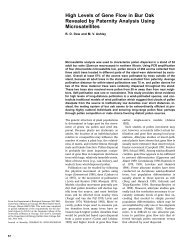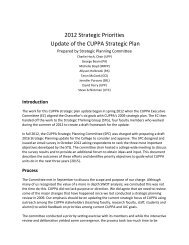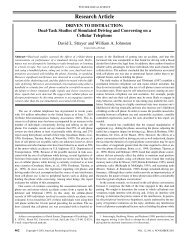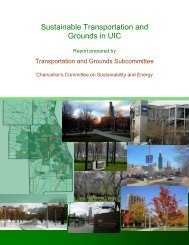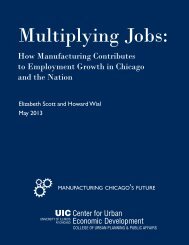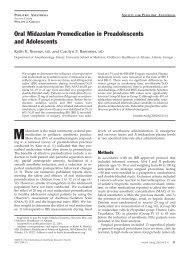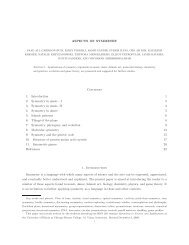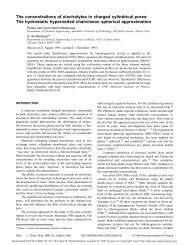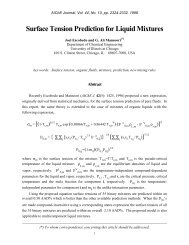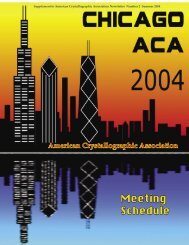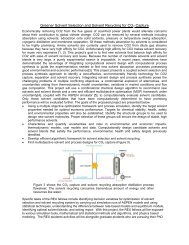Structure & Properties of Micelles and Micelle Coacervates of ...
Structure & Properties of Micelles and Micelle Coacervates of ...
Structure & Properties of Micelles and Micelle Coacervates of ...
You also want an ePaper? Increase the reach of your titles
YUMPU automatically turns print PDFs into web optimized ePapers that Google loves.
quite stable deposits which may not wash away by current remediation techniques. One <strong>of</strong> the effective <strong>and</strong> routine<br />
methods <strong>of</strong> remediation <strong>of</strong> heavy organic deposits is the use <strong>of</strong> strong aromatic solvents that could dissolve the<br />
asphaltene deposits (Acevedo et al 1995, Dubey <strong>and</strong> Waxman 1995, Kim et al 1990, Pacheco-Sanchez <strong>and</strong> Mansoori<br />
1997). Asphaltene flocs (aggregates) can form steric-colloids in the presence <strong>of</strong> excess amounts <strong>of</strong> resins <strong>and</strong><br />
paraffin hydrocarbons (Park & Mansoori, 1988, Mansoori 1997) as shown in Figure 3.<br />
Figure 3<br />
In this report the micellization <strong>and</strong> coacervation <strong>of</strong> asphaltene after it is separated from petroleum fluids <strong>and</strong> then<br />
dissloved in specific organic solvents are studied<br />
Asphaltene molecules may have an average molecular diameter around 5 Nm. Asphaltene micelles may<br />
have an average size around 25 Nm. Whereas micellar coacervates may have sizes greater than 25 Nm. Several<br />
experimental investigations have indicated that asphaltene micelles could be <strong>of</strong> spherical-like, cylindrical-like, or<br />
disk-like form (Espinat <strong>and</strong> Ravey 1993, Yen <strong>and</strong> Chilingarian, 1994). All these investigations are indicative <strong>of</strong> the<br />
fact that asphaltene particles may self-associate, but not flocculate, <strong>and</strong> form micelles in the presence aromatic<br />
hydrocarbons (or other polar solvents) as shown in Figure 4.<br />
Figure 4<br />
An example <strong>of</strong> asphaltene micelle coacervation is depicted in Figure 5.<br />
Figure 5<br />
The mechanisms <strong>of</strong> asphaltene flocculation <strong>and</strong> steric-colloid formation are well understood <strong>and</strong> modeled<br />
(Kawanaka et all 1989, Mansoori 1997). There exist also plenty <strong>of</strong> experimental data for asphaltene flocculation.<br />
Pacheco-Sanchez <strong>and</strong> Mansoori (1998) have developed a theoretical model to explain <strong>and</strong> quantify the phenomenon<br />
<strong>of</strong> asphaltene micellization <strong>and</strong> coacervation. This theory is also able to predict the nature <strong>of</strong> micelles from the<br />
phase diagram <strong>of</strong> the asphaltene micellization <strong>and</strong> coacervation. Despite the experimental evidence on the<br />
micellization <strong>of</strong> asphaltenes, to our knowledge no experimental data is available for the micelles coacervation point<br />
5



